Table of contents
Learn about the main chakras and how to align them!
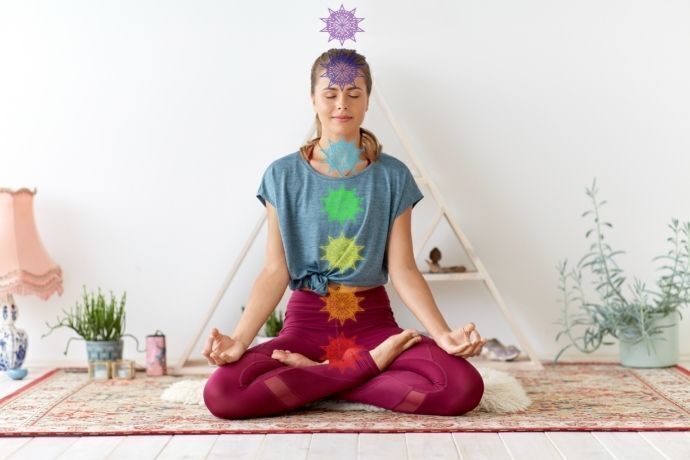
Chakras have gained popularity recently thanks to the rise of practices such as yoga and meditation. They are a complex and ancient energy system that originated in India. The first account was in the Vedas, ancient sacred texts of spiritual knowledge from 1500 to 1000 BC.
By practicing disciplines based on the seven main chakras, it's possible to understand a little more about these energy centers that influence so much of our daily routine and tasks.
Know that a health problem, for example, can be caused by the imbalance of one or more chakras. In fact, when we align these energy systems, many illnesses can be alleviated or even eliminated. Want to find out more? Check it out below.
Understanding more about the chakras
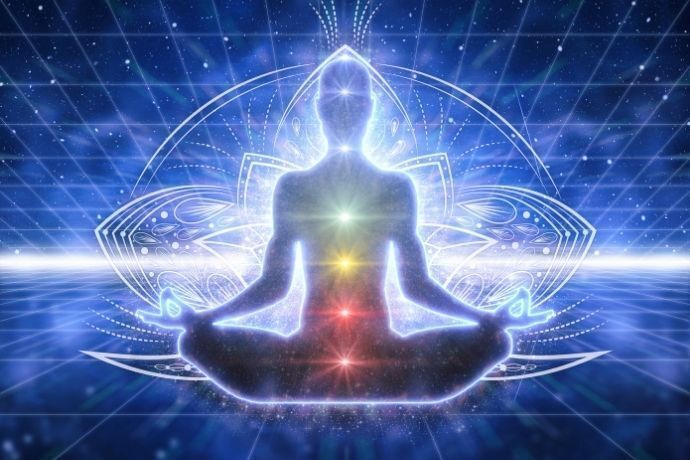
Although they are gaining prominence, many people still don't know what chakras are, where they are located in our body and what symptoms they can cause. These are the most common doubts and all the answers are just below. Read on and check them out.
What are the chakras?
Chakra, in Sanskrit, means wheel, circle or vortex, and refers to energy points that we have in our body. You could say that they are a kind of energy disc that needs to be open and aligned in order to be in perfect balance.
This is because they correspond to nerves, organs and energetic areas of our body, influencing the emotional and physical well-being of each individual. Although the number of chakras is not a consensus, it is believed that there are 114 different ones, but only 7 are the main ones, those that run along the spine. In addition, each of the 7 chakras has a name, color and specific area of the body governed.
What are the main chakras?
In all, there are 7 main chakras that run along our spine until they reach our head. Each one is linked to an element and is part of a long history of the evolutionary hierarchy of human needs, from the development of the survival instinct to spiritual evolution.
It is also common for them to be called Padma, which means lotus. Incidentally, they are all represented by a lotus flower with different petals and colors. These energy discs act as a link between the mind, body and spirit, the main ones being: Muladhara, Svadhisthana, Manipura, Anahata, Vishuddha, Ajna and Sahasrara.
Are there also secondary chakras?
For those who don't know, there are also secondary chakras, which are also energy systems in constant movement in the body, but which remain in the background. They are located close to the main chakras and act in conjunction with them, influencing the whole body.
When the secondary chakras are well developed, we are able to take a closer look at our feelings, emotions and physical symptoms. The balance of these energy centers is fundamental so that vital energy can flow in a light and natural way.
However, if they are out of balance, they can show unpleasant signs, requiring reiki treatments, for example, which restore the body's well-being and proper functioning.
How do the chakras work?
Present in the spine, the chakras store and redistribute energy throughout the body. They are very important energy centers for the proper functioning of the body and mind, and can be compared, on a physical level, to nerve ganglia.
Flowing through the nadis (thousands of channels through which the body's energy flows, similar to the meridians in Chinese medicine), the energy (prana) travels an extensive path that ends at the spine.
By the way, there are three main nadis (ida, pingala and sushumna) that take the energy to the energy channels par excellence, reaching the chakras.
Is it possible to have a chakra in real life?
Unlike in famous Japanese anime such as Naruto, it is not possible to see or touch a chakra in real life. However, they have many effects that manifest themselves in a physical way and can appear at any time when there is an imbalance.
When the chakra is balanced and open, energy flows freely in this area, but if it is closed or blocked, it is unable to circulate. In this case, there are unpleasant symptoms in the mental, physical, emotional and behavioral fields.
Basic Chakra - Muladhara
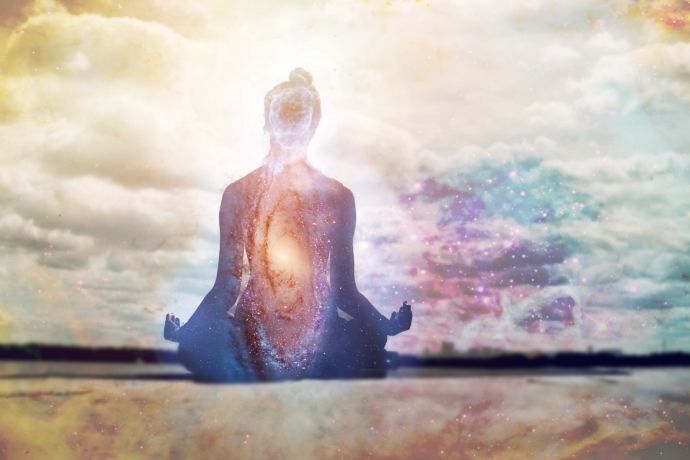
Considered the first main chakra, the Muladhara or basic chakra is located right at the base of the spine, in the coccyx region. Represented by the color red, it is linked to the physical identity, stability and foundations of each being. Check out much more below.
Characteristics of the basic chakra
The basic chakra or Muladhara is also known by other names, such as: earth chakra and first chakra. See what its main characteristics are:
Location: perineum, coccyx or base of the spine;
Element: land;
Main function: survival;
Physical dysfunctions it can cause: leg problems, arthritis, sciatica, obesity and hemorrhoids;
Glands: adrenals;
Color: red;
Meaning: smell;
Bija mantra: lam;
Body parts governed: bones, muscles and large intestine.
Causes and symptoms of the basic chakra in balance
As the basic chakra or Muladhara is associated with the physical identity and foundations of the human being, it is essential for bringing a sense of stability and constancy, in the positive sense.
When this chakra is aligned and open to the right degree, the individual feels well-anchored and secure, both in physical and emotional matters, becoming more confident to make decisions and act correctly.
With the function of assisting in the performance of the other chakras, when in balance, it is an extremely important link between the material and spiritual worlds, also bringing greater awareness of individuality and the very essence of each being.
Causes and symptoms of an unbalanced basic chakra
Responsible for the foundation and rooting of all the other chakras, the Muladhara governs the health of the legs, both physically and figuratively. This is because those people who seem to live in the world of the moon probably face an imbalance in this energy center.
Therefore, individuals who have difficulty figuring out what to do in life and have not yet managed to find their roots may have some disturbance in this chakra.
If the Muladhara is too closed, there is a great feeling of insecurity, a fear of losing everything you own, which drastically reduces your self-confidence. It is linked to the fear that appears when faced with a threat or when survival is at stake.
However, when you're too open, there's a risk of exaggerated attachment to material goods, with the right to jealousy, possessiveness and no fear whatsoever. It's worth keeping an eye on, because this behavior can lead to a lot of conflict.
When it comes to physical problems, blocking this chakra leads to ailments such as arthritis, constipation and bladder or colon disorders. Spiritually, ignoring the symptoms causes the person to lose their roots, balance and evolution.
How to align the Muladhara chakra
As a basic chakra, Muladhara channels the energy of the earth, helping you to be more connected, secure and provided for. To seek its alignment, it's worth investing in some asanas (yoga postures).
But first, you need to do a breathing exercise, paying full attention to your body during the practice. The mountain pose, tadasana, is ideal for establishing a connection with the energy of the earth. This is because the four corners of the feet carry this energy upwards, nourishing the body as a whole.
Other great options are padmasana (lotus), balasana or malasana. In addition to these, it's worth seeking harmonization through uttanasana, virabhadrasana II (warrior II), sethubandasana (bridge pose), anjaneyasana, sun salutation and shavasana.
Sacral Chakra - Svadhisthana
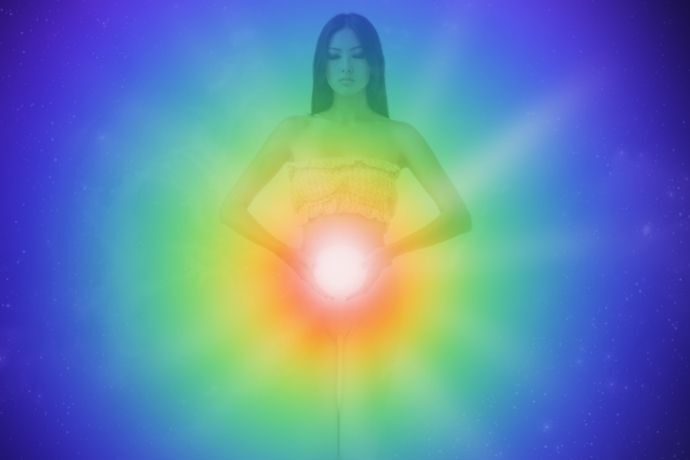
Located just below the navel and above the pubic bone, the sacral chakra or Svadhisthana is represented by the color orange. It is also closely linked to sexuality, pleasure and creativity. See everything below.
Characteristics of the sacral chakra
Also known as Svadhisthana, the water chakra, the sexual chakra and the second chakra, the sacral chakra has water as its element. And it is from this that many characteristics of this energy center arise, such as movement, change and flow.
While the first chakra works to root and form a solid foundation, the second is about letting things flow. Learn more:
Location: just below the navel and above the pubic bone;
Element: water;
Main function: procreation, pleasure and desire;
Physical dysfunctions it can cause: stiffness in the lumbar region, back problems in general, uterine dysfunctions, kidney problems, frigidity and impotence;
Glands: testicles and ovaries;
Color: orange;
Meaning: taste;
Bija mantra: vam;
Body parts governed: In the behavioral area, it governs pleasure, sexuality, emotions and sensations.
Causes and symptoms of the sacral chakra in balance
The meaning of the name Svadhisthana in Sanskrit gives a good idea of how this chakra, which is linked to pleasure, works. When it is in balance, aligned, it is responsible for vitality, sexual energy and a healthy immune system.
It's also associated with the female figure and, even more specifically, with motherhood, so if it's working properly, it helps a lot with the performance of the reproductive organs.
As it manages the vigor of the body as a whole, it gives a lot of strength and energy. In addition, the individual feels more prepared to deal with stressful and even terrifying issues.
Causes and symptoms of an unbalanced sacral chakra
When out of balance, the Svadhisthana chakra causes the body to manifest certain problems related to the organs it governs. Illnesses such as urinary system infections, lower back pain and impotence are the most common.
In the emotional field, it governs feelings of self-esteem, pleasure, sexuality and creativity. Therefore, when energies are blocked in this area, there is enormous frustration with one's own image, and the fight with the mirror can become constant.
When the sacral chakra is too open, it can cause an exaggerated and even self-centred search for pleasure, and this pleasure is not just sexual.
How to align the Svadhisthana chakra
Balancing the Svadhisthana chakra can be achieved through some yoga postures. The triangle, also called trikonasana, is perfect for this task, as it stimulates the organs in the abdominal region, making the energy circulate.
Other options are padmasana (lotus), virabhadrasana II (warrior II), parsvakonasana (extended side angle), parivritta trikonasana (triangle with trunk rotation), garudasana (eagle) and marjariyasana (cat).
Umbilical Chakra - Manipura

The umbilical chakra, also known as Manipura, is located in the abdomen, near the stomach area. It is represented by the color yellow and is connected to feelings of self-esteem and confidence. Learn more about this chakra below.
Characteristics of the umbilical chakra
Popularly known as the umbilical chakra, Manipura, fire chakra, solar plexus chakra or third chakra, it is in the solar plexus region, close to the navel and stomach. Its energy is associated with will and strength.
Its physical influences are linked to metabolism, considering both the macroscopic level, which involves all the processes of the digestive system, and the microscopic level, which manifests itself in the cells.
Location: solar plexus, near the navel and stomach;
Element: fire;
Main function: will, power and security;
Physical dysfunctions it can cause: digestive disorders, diabetes and ulcers;
Glands: pancreas and adrenals;
Color: yellow;
Meaning: vision;
Bija mantra: ram;
Body parts governed: liver, stomach and spleen.
Causes and symptoms of the umbilical chakra in balance
When the umbilical chackra is in balance, it functions in almost the same way as the stomach. Just as this organ is the basis for the harmonious distribution of nutrients to the body, the solar plexus is in charge of disseminating energy to all the other energy centers.
Manipura has a great impact on the way a person sees themselves, so if it is aligned, they feel much more beautiful and self-confident.
With the aim of spiritual transformation through willpower and intentions, it is thanks to it that people are able to free themselves from the standards imposed by society and finally change their mentality, adopting new habits and taking their journey in a totally different direction.
Causes and symptoms of an unbalanced umbilical chakra
Blockages and imbalances in the third chakra are often experienced through digestive problems such as ulcers, heartburn, eating disorders and indigestion.
In addition, as it is the chakra of personal power, it can cause a lot of damage to self-esteem and self-confidence. Willpower also decreases dramatically, bringing with it uncertainty and indecision.
However, if Manipura is very active, the individual will seek power at any cost, regardless of the consequences. They are overconfident and arrogant, and find it difficult to listen to other people's opinions.
How to align the Manipura chakra
As the Manipura chakra connects to solar energy to bring a lot of willpower, determination and a wonderful warm feeling inside the belly, a yoga posture is excellent for helping to activate the fire of this energy center.
The boat pose, navasana, is the most recommended to activate your core and unblock or balance this chakra. Other options are parivrtta utkatasana (chair with trunk rotation) and adho mukha svanasana (dog looking down).
If you want to vary things up, you can also try paripurna navasana (full boat pose), parivrtta janu sirsasana (head on knee with twist) and urdhva dhanurasana (upward facing bow).
Heart Chakra - Anahata
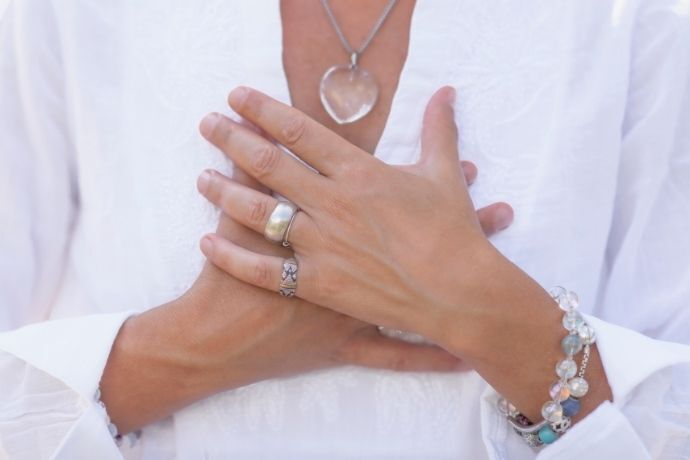
Represented by the color green, the heart chakra or Anahata is in the center of the chest, just above the heart. As such, it is closely linked to feelings such as love and compassion. Discover more of its characteristics right now.
Characteristics of the heart chakra
Anahata, the heart chakra, is also called the heart chakra, the air chakra or the fourth chakra. It is seen as the connecting center between the lower chakras, which are considered more material, and the upper chakras, which are more connected to the spiritual side.
Although it governs love, just like the second chakra, the Anahata is more associated with pure, innocent and unconscious feelings, something that comes from deep within the soul. The love of the Svadhistana, on the other hand, is more sensual, focused on one person and connected to passion.
Location: at heart level, in the center of the chest;
Element: air;
Main function: love and affection;
Physical dysfunctions it can cause: heart and lung disorders, as well as blood pressure problems;
Gland: Great;
Color: green;
Meaning: touch;
Bija mantra: yam;
Body parts governed: lungs and heart.
Causes and symptoms of the heart chakra in balance
The Anahata chakra is associated with forgiveness, altruism and relationships in general, whether romantic, fraternal or paternal. It celebrates all forms of love, so when it is in balance, the area of interpersonal relationships in your life improves greatly.
It can be said that your body is filled with extremely positive feelings, such as gratitude and satisfaction. In addition, the connection with the spiritual side is strengthened, generating a very important connection between the physical and the immaterial.
Causes and symptoms of an unbalanced heart chakra
Imbalances, such as blockages in the Anahata chakra, manifest themselves physically through heart disease, asthma and weight problems. However, blockages can be seen even more frequently and clearly through people's actions.
Individuals with blockages in the heart chakra usually put others first, to their own detriment. In addition, when it is out of alignment, it brings feelings of loneliness, insecurity and social isolation.
On the other hand, if this chakra is too open, there is a great chance that you will suffer excessively for others or for things and situations that don't belong to you.
How to align the Anahata chakra
It is very important to keep the Anahata chakra aligned, as it makes us feel compassion, generosity, respect and empathy in the right measure. You could say that it is the gateway to allowing love into our lives.
The crescent moon pose, anjaneyasana, is excellent for opening the heart and balancing energy.
Other great poses are: trikonasana (triangle), maha sakti asana (great energy), prasarita padottanasana (wide forward bend), ardha matsyendrásana (half lord of the fishes), ustrasana (camel), dhanurasana (bow) and balasana (child).
Laryngeal Chakra - Vishuddha

Vishuddha, the laryngeal chakra is located exactly in the throat and is represented by the color blue. It is closely linked to communication. Find out all about this chakra below.
Characteristics of the laryngeal chakra
Called the ether chakra, laryngeal chakra, fifth chakra and Visuddha, which means purification in Sanskrit, it is the purifying chakra. It is also linked to communication, the way we express ourselves and creativity.
The communicative power, moreover, goes beyond the physical states of matter and is closely associated with the ether, its element, space and vibrations. Check out other characteristics:
Location: throat;
Element: ether, space;
Main function: creativity and communication;
Physical dysfunctions it can cause: frequent sore throats, thyroid disorders, hearing problems and a frequently sore neck;
Glands: thyroid, parathyroid;
Color: blue;
Meaning: audition;
Bija mantra: ham;
Body parts governed: throat, neck and ears.
Causes and symptoms of the laryngeal chakra in balance
When the laryngeal chakra is aligned or in balance, you are able to speak and listen to others with compassion. In addition, you will feel extremely confident when talking or giving a speech, as you know that you are being true to yourself with your words.
Linked to the thyroid and parathyroid glands, Visuddha is able to control our body's hormone production, helping to keep everything in perfect harmony. In this way, it also interferes positively with menstrual cycles, helping to keep the blood purified and flowing naturally.
Causes and symptoms of an unbalanced laryngeal chakra
Ruler of verbal communication, the laryngeal chakra in imbalance can cause voice and throat problems, as well as any ailments linked to this area. Teeth, gums and mouth can also suffer the consequences of a blockage.
In addition, misalignments can also be seen when we dominate conversations, gossip, speak without thinking and have problems saying what we think. Another common setback is that people tend not to listen to us, shyness takes over and the fear of speaking one's mind arises.
Creativity also becomes scarce. On the physical side, frequently sore throats are a warning sign. However, if the activity is excessive, the individual becomes too talkative and doesn't even notice what is being said.
How to align the Vishuddha chakra
To align the Vishuddha chakra, it's worth investing in some extremely beneficial yoga postures: try head rotation, bujangasana (snake), ustrasana (camel), sarvangasana (sail), halasana (plow), matsyasana (fish), sethubandasana (bridge) and viparita karani (legs on the wall).
In addition, chanting mantras is a great way to open up the laryngeal chakra and get rid of the problems caused by its imbalance.
Frontal Chakra - Ajna

One of the most important, the frontal chakra or Ajna is in the forehead region, between the eyes. Its color is indigo and it governs a more spiritual side, intuition and imagination. Check out its characteristics and how to align it below.
Characteristics of the frontal chakra
Also called the light chakra, frontal chakra, third eye chakra and sixth chakra, Ajna brings the idea of command and perception. Through this energy center, we can perceive the external world in the best way, as well as reflect and think about our own reality. Here are some of its characteristics:
Location: center of the head;
Element: Light;
Main function: vision and intuition;
Physical dysfunctions it can cause: vision problems, headaches and sleep disorders;
Glands: pituitary;
Color: indigo;
Meaning: vision.
Bija mantra: om;
Body parts governed: head.
Causes and symptoms of the frontal chakra in balance
When the Ajna chakra is in balance, it controls all the other energy centers in the body perfectly and flawlessly. It is therefore more than essential to keep it in harmony. Linked to knowledge processing and imagination, this chakra plays a fundamental role in logical thinking, learning and the ability to form ideas.
One of its most valued functions, intuition is even more enhanced when this chakra is in balance. It can be said that it becomes the perfect conduit for that voice of conscience.
Causes and symptoms of an unbalanced frontal chakra
If the frontal chakra is misaligned, blockages can manifest as headaches, problems with vision or concentration, as well as hearing problems. In fact, people who have problems listening to others (the famous "know it alls") probably have a blockage in this chakra.
In addition, they find it very difficult to trust their intuition, and their imagination falls by the wayside. Another negative point is that they tend to make unfortunate choices, which often turn out to be completely wrong.
How to align the Ajna chakra
If you notice any imbalance in the Ajna chakra, the tip is to use yoga postures to correct the situation. The ardha pincha mayurasana (dolphin), for example, optimizes circulation in the face and brain, which stimulates and aligns the frontal chakra.
Other ideal positions are natarajasana (lord of the dance), utthita hasta padangusthasana (thumb on foot with hand extended), parsvottanasana (standing side stretch), adho mukha svanasana (dog looking down), asva sancalanasana (horse), baddha konasana (butterfly), sarvangasana (candle), matsyasana (fish) and balasana (child).
Coronary Chakra - Sahasrara
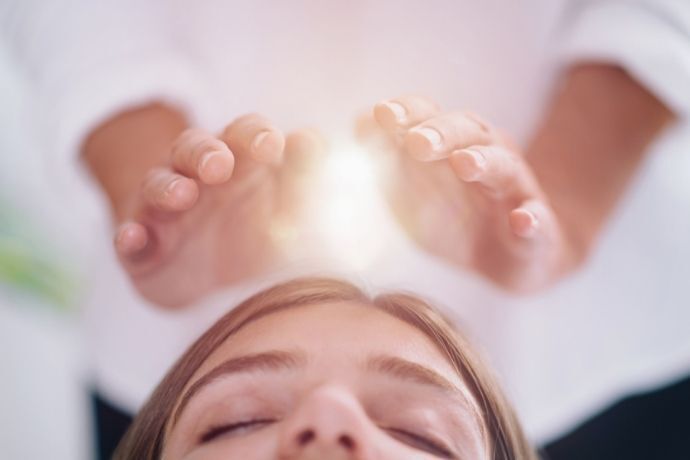
The seventh chakra, also known as the crown or Sahasrara, is at the top of our head and is represented by the colors violet or white. Read on and learn more about this chakra linked to consciousness and intelligence.
Characteristics of the crown chakra
Also known as the crown chakra, crown chakra and seventh chakra, the Sahasrara means, in Sanskrit, thousand-leaf lotus, in reference to the petals of the lotus flower that symbolize this energy center. Here are some of its characteristics:
Location: top of the head;
Element: thought;
Main function: understanding;
Physical dysfunctions it can cause: learning difficulties, confusion and depression;
Glands: pineal (epiphysis);
Color: violet or white;
Bija mantra: ah;
Body parts governed: brain and nervous system.
Causes and symptoms of the crown chakra in balance
As the most important chakra of all, the crown is a great facilitator of our connection with divine wisdom. It is also associated with intuition and mediumship, as well as being responsible for understanding the very existence of each being.
In alignment, this chakra stimulates good brain function and also influences the production process of essential hormones such as melatonin and serotonin, the famous happiness hormones.
Energy balance also plays a fundamental role in the quality of sleep and hunger control, so you should always try to keep it in balance and protected to prevent denser or negative energies from settling in.
Causes and symptoms of an unbalanced crown chakra
Those with a blocked or unbalanced Sahasrara chakra tend to be more closed-minded, skeptical and stubborn. In addition, there is a high chance that the individual will lose the ability to dream, falling into a pit of disenchantment and disillusionment.
Another negative consequence is the feeling of self-pity and agony due to the lack of understanding of your true essence. On the physical side, it can cause numerous problems, such as depression, insomnia, immune disorders and even premature ageing.
How to align the Sahasrara chakra
As the crown chakra is the highest of all and faces upwards, it can benefit from a few different yoga poses, always accompanied by good breathing work.
The posture of sirsasana (inverted over the head) is ideal for bringing concentration, peace and balance to the practitioner, aligning the unbalanced chakra. Other options include: halasana (plough), vrschikasana (scorpion), sarvangasana (candle) and matsyasana (fish).
Get your chakras in balance and see the benefits in your life!
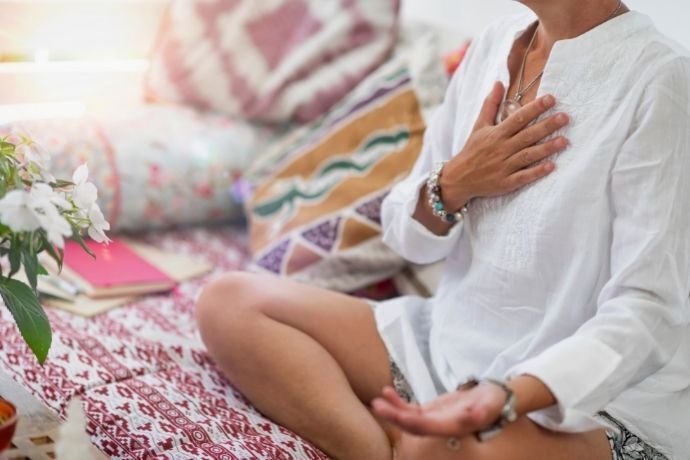
Representing the whole being, the chakras govern us in every way, from the physical to the spiritual and emotional. For this reason, they are able to bring overall balance to our journeys.
It can be said that the consciousness of every being is spread across the 7 main chakras and their alignment promotes a wonderful feeling of harmony, well-being and happiness.
It's therefore worth investing some time in understanding and balancing all the chakras, so that you can improve every part of yourself and always evolve. Yoga and meditation are ideal for this task.

